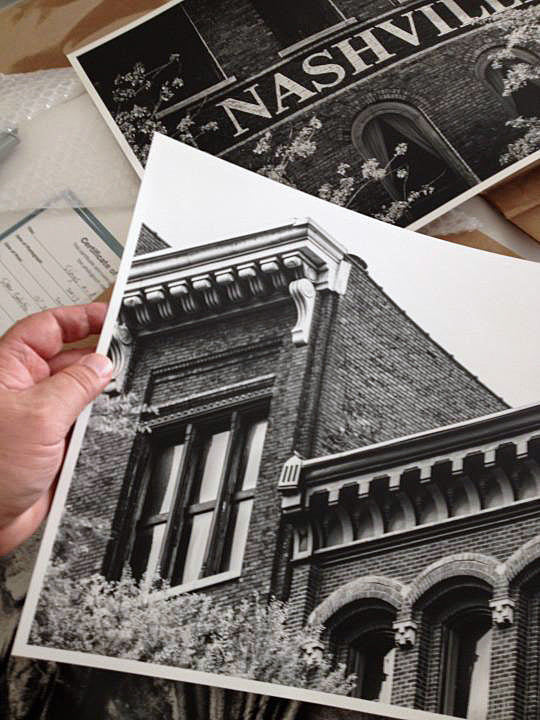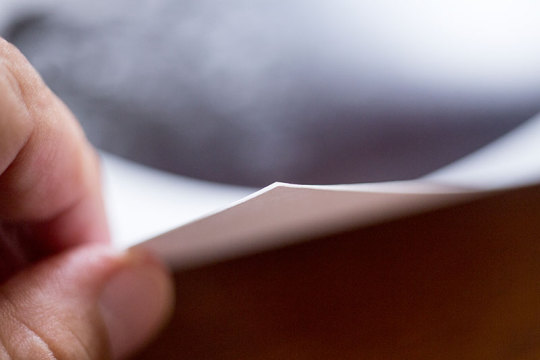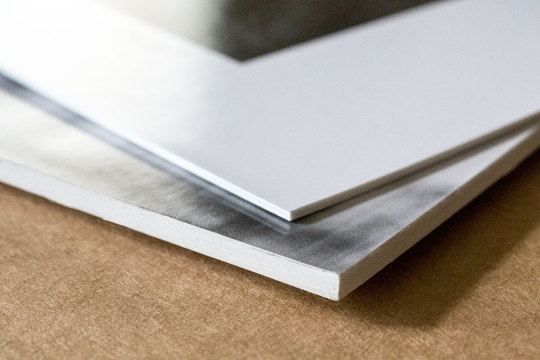
For the art lover interested in buying contemporary photography, there’s a very wide gamut of processes, print types and materials available today. From modern revival of antique processes like tintypes, cyanotypes and salt prints, to traditional darkroom prints, and of course the latest digital inkjet technologies, there’s a rich and vibrant selection of photographic art for every taste.
How does a collector know what they are actually getting when they buy a fine art photograph – especially when buying online?
For the purposes of this article, I’m focusing on the most common types of prints which I have made and sold to collectors – the fine art inkjet print and the traditional wet-processed silver gelatin fiber-based print.
Be sure to scroll to bottom to watch a video about photographic papers
Terminology
Without delving too deeply into esoteric details, let’s define a few terms. “Silver gelatin” (also called gelatin silver) refers to traditional darkroom-style photographic papers which use light-sensitive silver salt emulsions. While they differ in their materials and characteristics, both RC papers and fiber papers are silver gelatin papers. Both kinds of papers are exposed to light, then wet processed in chemistry to produce the final print. “Giclée” is a term that refers to fine art prints made on high-end inkjet printers. While inkjet prints were originally not well-received by the art community, they have become the de facto standard for many of the fine art prints on the market today. Professional quality inkjet printers may use dye-based inks, or pigment-based inks. Pigment inks are considered more archival, and are the types of inks our studio uses.
Surfaces illustrated: In the print samples below, I’ve curved the paper against the light to intentionally catch the glare, highlighting the fine textures in the surface of these papers. Keep in mind, the close-up images are highly magnified to illustrate the properties of the papers, including their shine. At realistic viewing distances–especially when framed–the textures are barely perceptible. Also please keep in mind that variations in manufacturing, processing, and paper stocks might mean that your print will look slightly different from those illustrated here.*
Archival pigment inkjet prints on 100-percent cotton paper
Fine art inkjet prints offer many advantages: when printed with archival pigment inks on quality paper, they are quite stable; inkjet prints can be made on a wide variety of surfaces, from luster surface paper very similar to the RC papers shown above, to watercolor paper, canvas, and even fabric; inkjet prints can be printed at extremely large sizes; and, they can be exquisitely beautiful.
Our primary paper choice
Archival pigment prints on 100-percent baryta surface fine art paper are now the standard offering from our studio. This combination is not only stunningly beautiful, it's rated for stability for up to 400 years (according to tests performed by Wilhelm Imaging Research). The heavy paper feels substantial in the hand and the semi-gloss surface provides stunning detail and tonal rendition.

Above: Pigment inkjet print on 100% cotton Hahnemühle Photo Rag 308 gsm uncoated paper.

Closeup look at a pigment print on 100-percent cotton matte surface photo paper. This paper has very low texture and a stunning surface when printed. It's acid-free, and when properly framed, should last hundreds of years. Because it has no gloss, it will not add unsightly reflections inside the frame.

Extremely close view of the surface of a 100-percent cotton paper, in this case, Entrada Rag by Moab papers.

Very large prints on Hahnemühle Photo Rag Matt paper.

Nashville's Custom's House building printed on 100-percent cotton matte surface paper.
Silver gelatin prints on fiber-based baryta paper
Silver gelatin fiber prints are the traditional form of black and white photographs that were most used throughout the twentieth century. Fiber prints consist of several layers, including a paper base, a baryta layer that acts as a smooth and white surface to support the emulsion, the light-sensitive emulsion layer, and a gelatin layer that protects and seals the emulsion.
Fiber prints may feature glossy or matte surfaces. Glossy prints tend to be sharper and contain more detail, but can also be more difficult to display due to the problem of light reflection on the surface of the print. The prints I offer are considered glossy, but they aren't usually super shiny, although this can vary depending on the paper manufacturer.
Imaging stability researcher Henry Wilhelm has said that black and white fiber-based prints are the “high watermark of photography in terms of permanence. The silver image itself appears black because the pure silver is not affected by exposure to light, unlike color dyes or even pigments.” I can testify that these prints are absolutely stunning. For the discriminating collector, I highly recommend the silver gelatin option.


The beautiful surface and rich blacks of the fiber-based silver gelatin paper can be seen in this very close-up photograph.

A framed 16-inch x 24-inch silver gelatin fiber-based print.
Silver Gelatin Resin Coated (RC) Prints
Resin coated papers were first introduced in the late 1960s. They had originally been created for military use, to allow faster processing and drying times than traditional fiber papers. The paper base was sealed on both sides by a resin coating which kept the wet chemistry from permeating the paper, thus allowing for shorter washing and drying times in the darkroom. Eventually, the resin was replaced by a polyethylene coating, but the name stuck.
In the years since its inception, RC paper has improved markedly in its quality and stability. RC paper is estimated for stability for approximately 80 - 100 years.

Above: An ultra close-up of a signed, mounted RC print, illustrating the surface and texture.

Above: RC prints mounted on 4-ply and 8-ply mat board
RC papers have a subtle eggshell surface known as a luster surface. They are low shine, but an optional clear spray coating for extra UV protection adds extra glossiness. Some people like the shine, while others prefer the low-glare properties of the pure luster surface.
For inkjet printing, premium luster surface papers are very similar in appearance to traditional RC paper surfaces.

This image illustrates the gloss surface that results from adding a UV protective coating to the luster surface of RC photo paper.

A doorknob from the Texas State Capitol building printed on silver-based RC paper.
Canson Platine Fiber Rag
We don't currently offer this paper in our studio, but it is a favorite and a possible candidate for future use. It holds detail and tones better than any paper we have ever used, but the trade-off is that it also has a surface shine.
Made by a French paper company with more than 450-years of history, Canson Platine Fiber Rag is a 100-percent cotton paper base coated with a baryta-like print surface that holds a subtle stipple texture. The photograph below portrays the surface qualities of this stunning paper.

Above: detail view of the texture and surface glare of Canson Platine Fiber Rag photo paper.
Watch this video about my premium museum-quality silver gelatin prints
Was this comparison helpful? Your feedback is most welcome. Leave a comment below or send an email if you still have questions.
Thanks for reading!
Be sure to visit Keith on Facebook, Google+ or Pinterest.
*Disclaimer: We’ve done our best to accurately describe and illustrate the prints we sell. Please be aware that your print may vary slightly due to inconsistencies in manufacturing, processing, or availability of materials, all of which are beyond our control.

Leave a comment